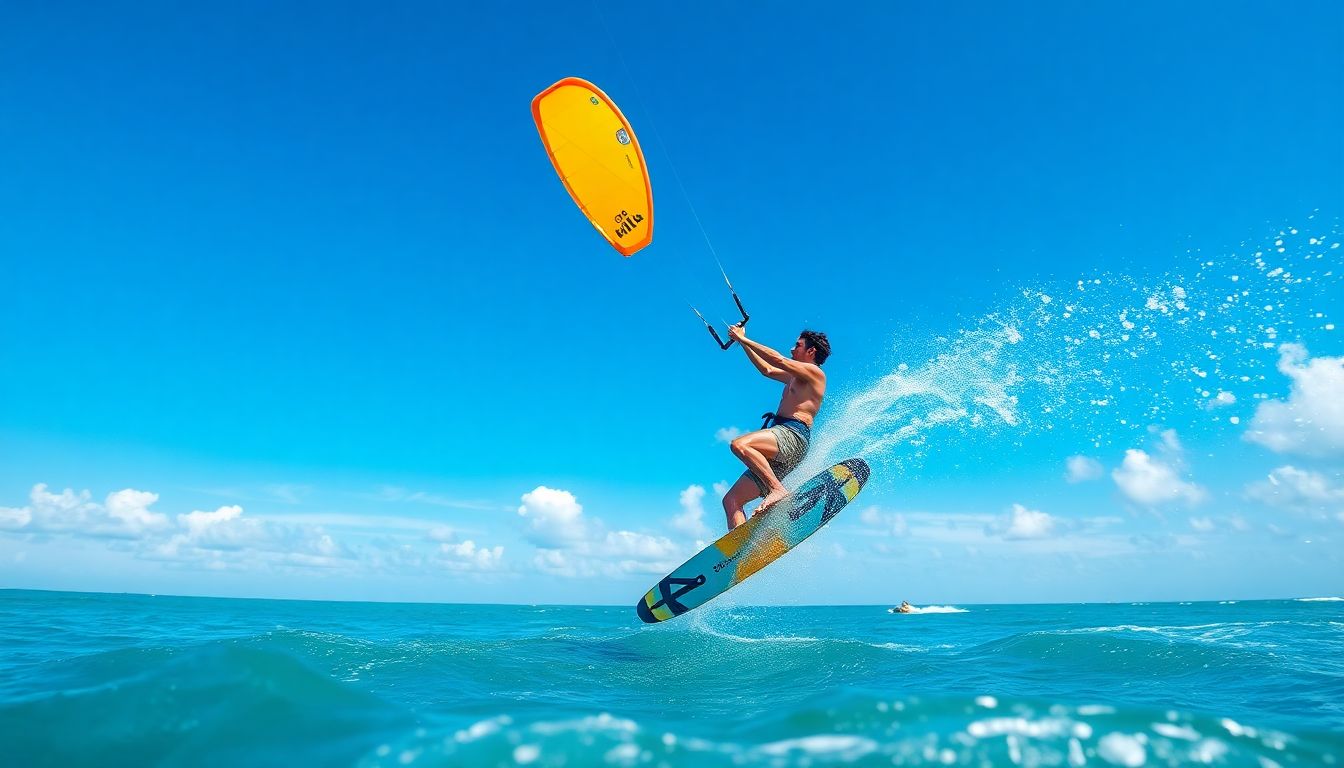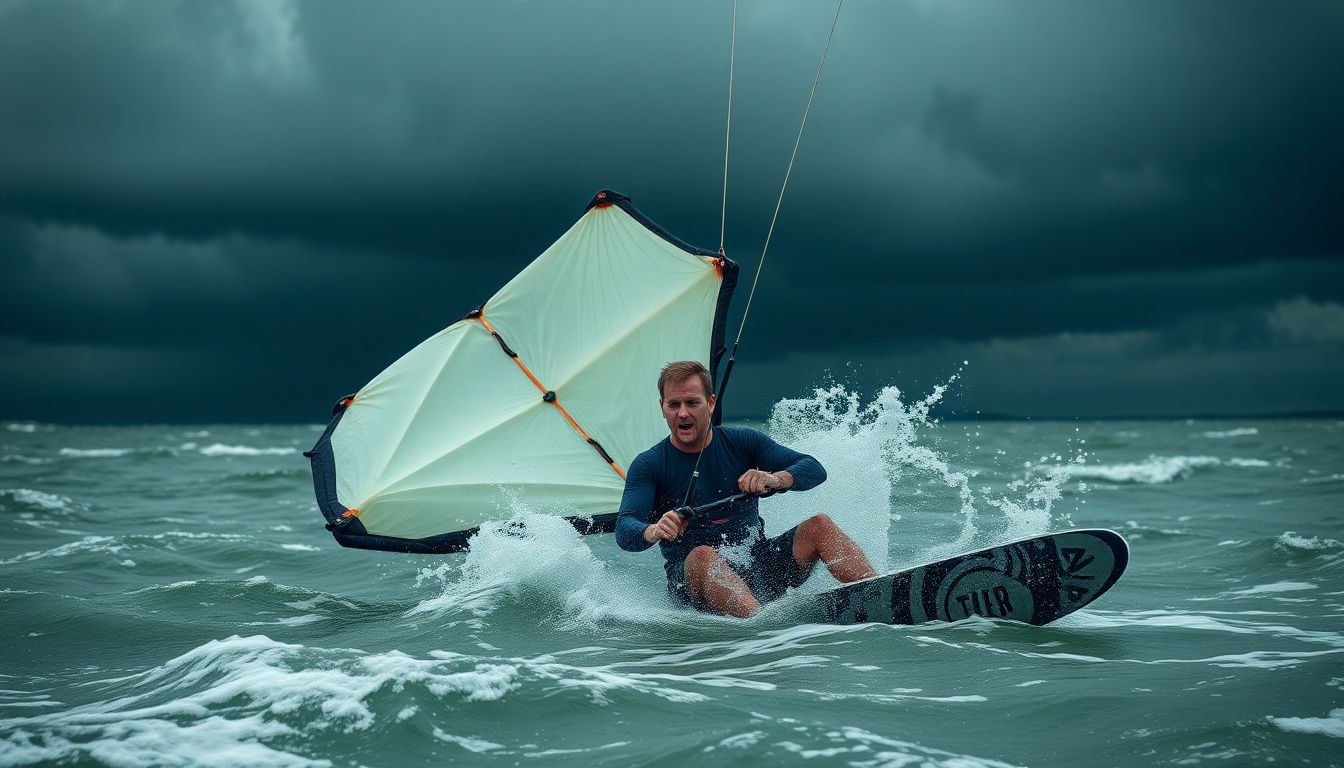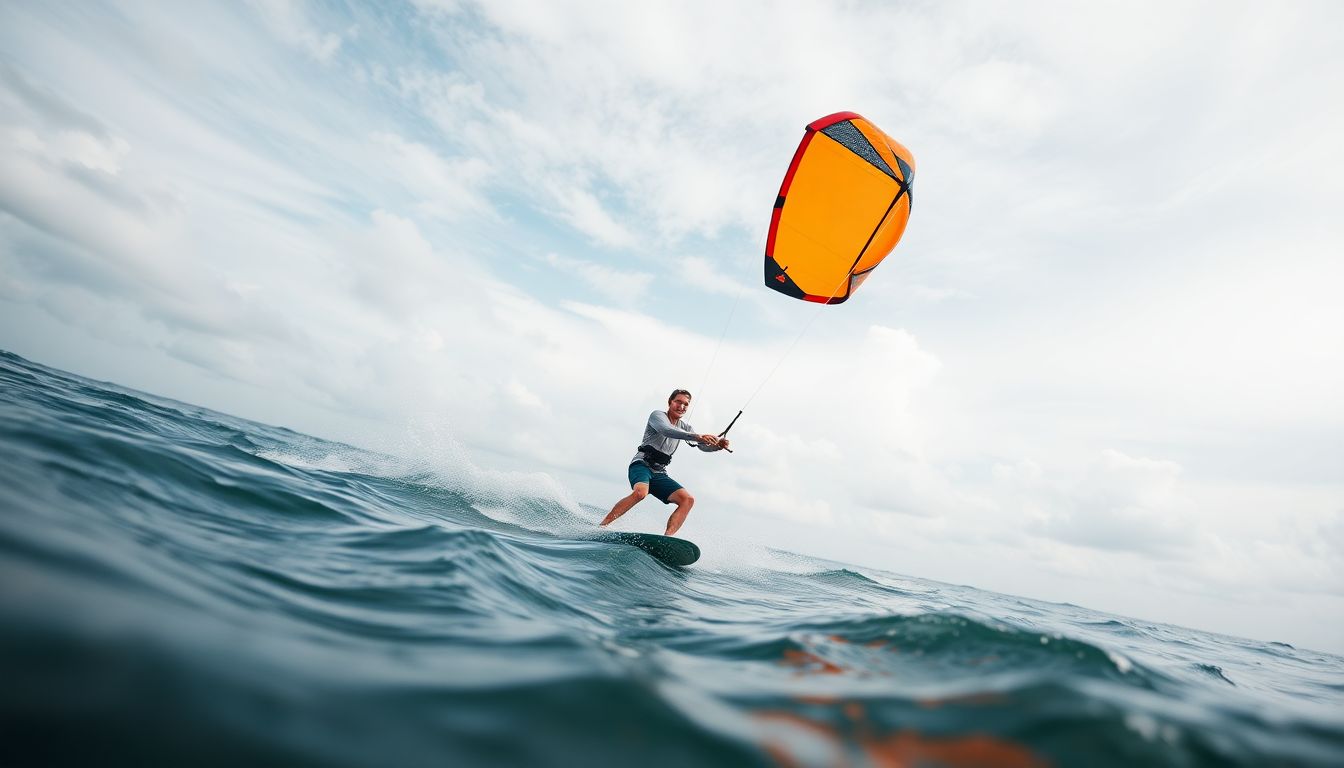Taking your kitesurfing skills to new heights can be an exhilarating experience. For intermediate riders, learning new tricks opens the door to greater enjoyment and confidence in the water. This guide focuses on essential tricks that you can master through clear, step-by-step instructions.
[Also see our article: A Beginner’s Guide to Choosing the Right Kitesurfing Gear].
The Thrill of Progression: Why Intermediate Riders Should Learn New Tricks
The excitement of kitesurfing lies in its continuous progression. Each trick learned not only enhances your skillset but also boosts your self-esteem. New tricks can bring a fresh sense of adventure and challenge, making your time on the water even more enjoyable.
Overcoming the Plateau: Common Challenges and How to Break Through
Many intermediate riders find themselves stuck at a plateau. It’s easy to feel frustrated when you’re not improving. Common challenges include:
- Fear of falling
- Lack of technique
- Misunderstanding of body mechanics
Breaking through requires focus, practice, and patience. By learning new tricks and committing to improvement, you’ll push past these obstacles.
Setting Realistic Goals: A Step-by-Step Approach to Trick Learning
Set achievable goals for your kitesurfing journey. Break down the trick you want to learn into manageable steps. Aim for gradual progress rather than attempting everything at once. This strategy allows for consistent development and keeps you motivated.
1. Refining Your Body Drag: Essential Technique for Advanced Maneuvers
Understanding Body Drag: Its Role in Kitesurfing and Trick Execution
Body drag is crucial for mastering tricks. It helps you regain control after a fall and sets you up for various maneuvers. A strong body drag technique lays the foundation for nearly all advanced tricks.
Step-by-Step Guide to Mastering Body Drag: Practice Drills and Tips
- Positioning: Keep your board perpendicular to the wind.
- Leaning Back: Pull your hips back to maintain tension on the kite.
- Arm Movement: Use your arms to steer and control your direction.
- Body Rotation: Rotate your body slightly to create lift.
Practice these drills consistently to improve your body drag technique.
Common Mistakes to Avoid: How to Identify and Correct Body Drag Errors
- Dragging Too Fast: Go slowly to maintain control.
- Inconsistent Kite Position: Keep the kite steady at 45 degrees.
- Poor Body Alignment: Keep your body aligned with the direction of movement.
2. Conquering the Back Roll: A Fundamental Kitesurfing Trick
Breaking Down the Back Roll: Essential Elements and Techniques
The back roll is a stylish and fundamental trick. Key elements include kite control, body positioning, and timing.
Step-by-Step Instructions for Landing a Clean Back Roll: Visual Aids and Tips
- Approach Speed: Gain adequate speed before attempting the trick.
- Kite Position: Lift the kite to the 12 o’clock position before the jump.
- Take Off: As you jump, lean back and pull on your back hand.
- Rotation: Look over your shoulder and tuck your knees in for rotation.
- Landing: Spot your landing and extend your legs to absorb the impact.
Troubleshooting Common Issues: Dealing with Early Releases and Uncontrolled Rotations
- Early Release: Hold your edge longer before releasing.
- Uncontrolled Rotation: Keep your eyes fixed on your landing spot to maintain control.
3. Tackling the Front Roll: Building on Your Back Roll Skills
Transitioning from Back Roll to Front Roll: Key Adjustments and Strategies
The front roll is the next step from the back roll. Focus on changing your approach and kite position.
Step-by-Step Guide to Mastering the Front Roll: Focus on Timing and Edge Control
- Takeoff Speed: Ensure you have adequate speed before the jump.
- Kite Position: Keep the kite high at 11 o’clock or 1 o’clock.
- Jump Technique: Level your board and push off the water.
- Rotation: Rotate your shoulders and head while looking down at the water.
- Landing: Keep your body compact to control the landing.
Advanced Front Roll Variations: Adding Style and Complexity to Your Riding
Try variations like front roll grabs or spins to add flair to your kitesurfing.

4. Introduction to Jumps: Launching and Landing with Confidence
Building Confidence: Essential Pre-Jump Exercises and Drills
Strengthen your legs and core with exercises such as squats and planks. This helps in gaining the necessary power to jump effectively.
The Kitesurfing Jump: Step-by-Step Technique for Clean Launches and Controlled Landings
- Kite Position: Keep the kite at around 12 o’clock.
- Speed Control: Approach the jump with enough speed.
- Launch: Extend your legs to propel yourself upward.
- Mid-Air Control: Keep your knees bent and body centered.
- Landing: Aim for a smooth landing by bending your knees.
Mastering the Landing: Absorbing Impact and Maintaining Balance
Focus on spreading your weight evenly across your board during the landing. This helps maintain stability.
5. The Importance of Safety and Risk Management in Kitesurfing
Assessing Your Skills: Understanding Your Limitations and Setting Realistic Goals
Always evaluate your skills before attempting new tricks. Knowing your limits not only helps prevent accidents but also promotes safer riding.
Choosing the Right Conditions: Wind Speed, Water Conditions, and Spot Selection
- Ideal wind speed: 15-25 knots for intermediate riders.
- Check the water for hazards like rocks or strong currents.
Safety Gear and Protocols: The Necessary Equipment and Best Practices for Secure Riding
Always wear a life vest, helmet, and impact vest. Following safety protocols ensures your protection while enjoying kitesurfing. For more see here.
Conclusion: Your Journey to Kitesurfing Mastery
Key Takeaways: Review of Essential Techniques and Skills
Remember, every trick requires practice, patience, and persistence. Consistently refine your skills and techniques.
Setting New Goals: Planning for Future Progression and Advanced Tricks
Set new challenges and strive for improvement. Progressing to advanced tricks will enhance your kitesurfing experience.
Embrace the waves and take your kitesurfing to the next level!








